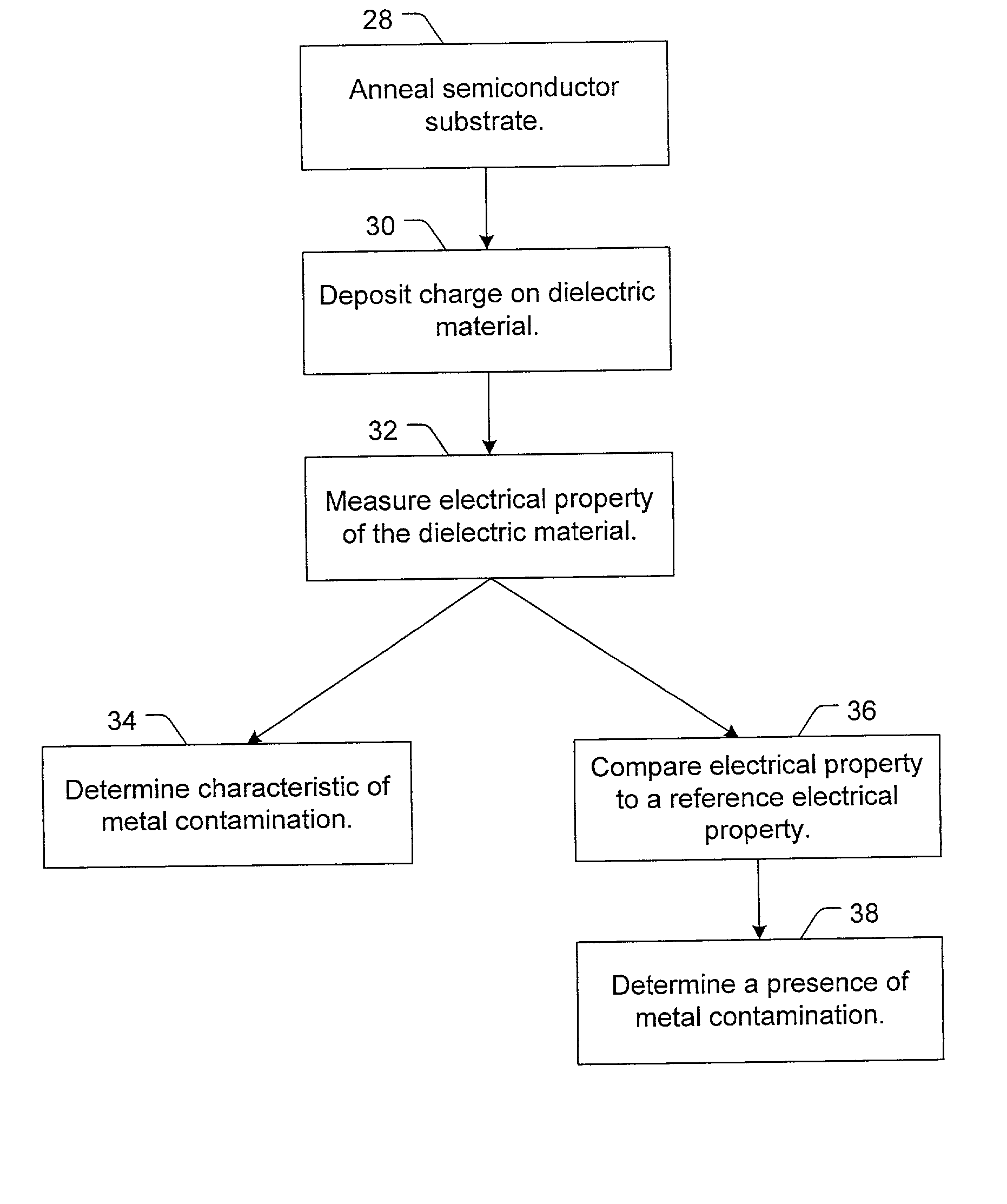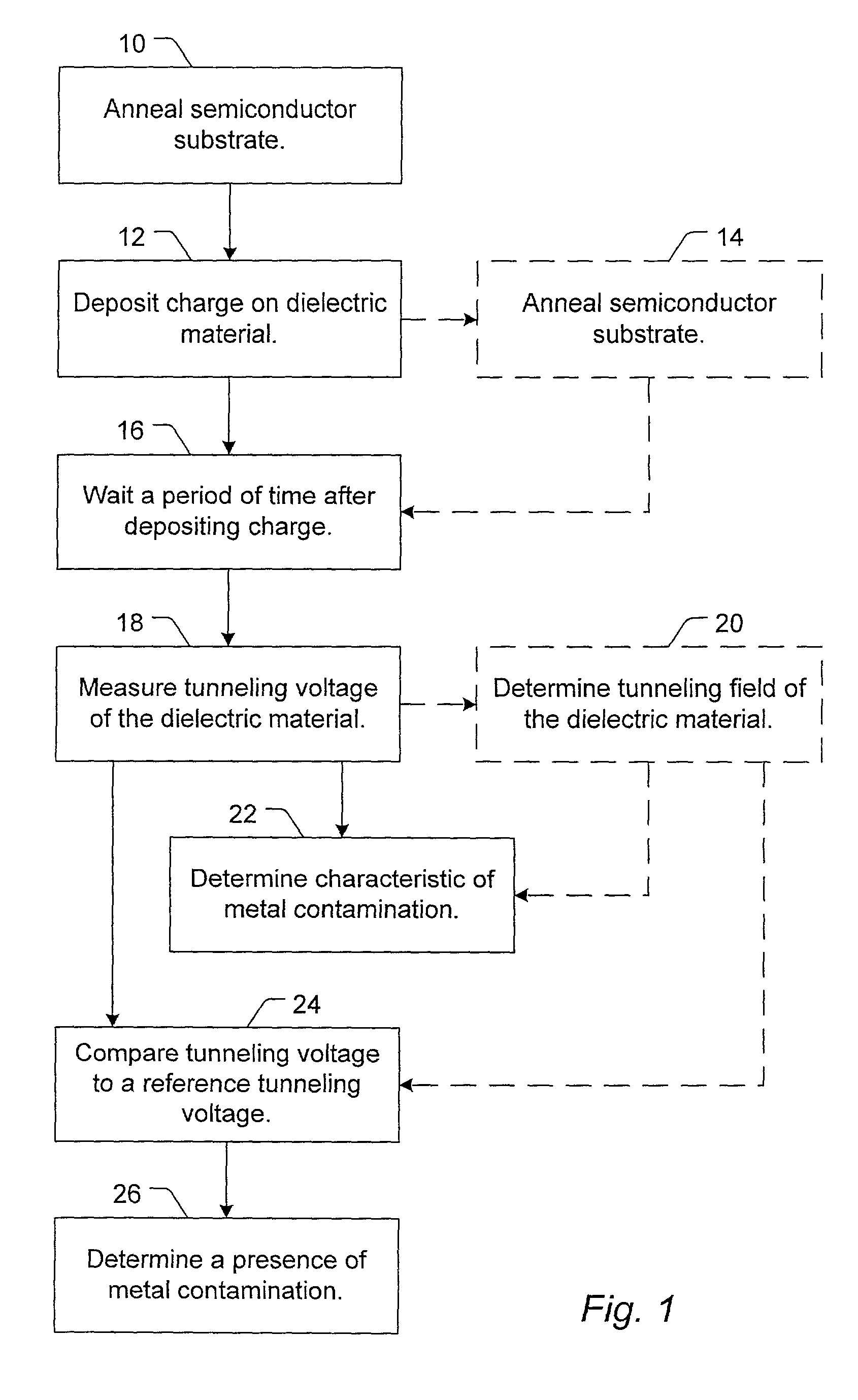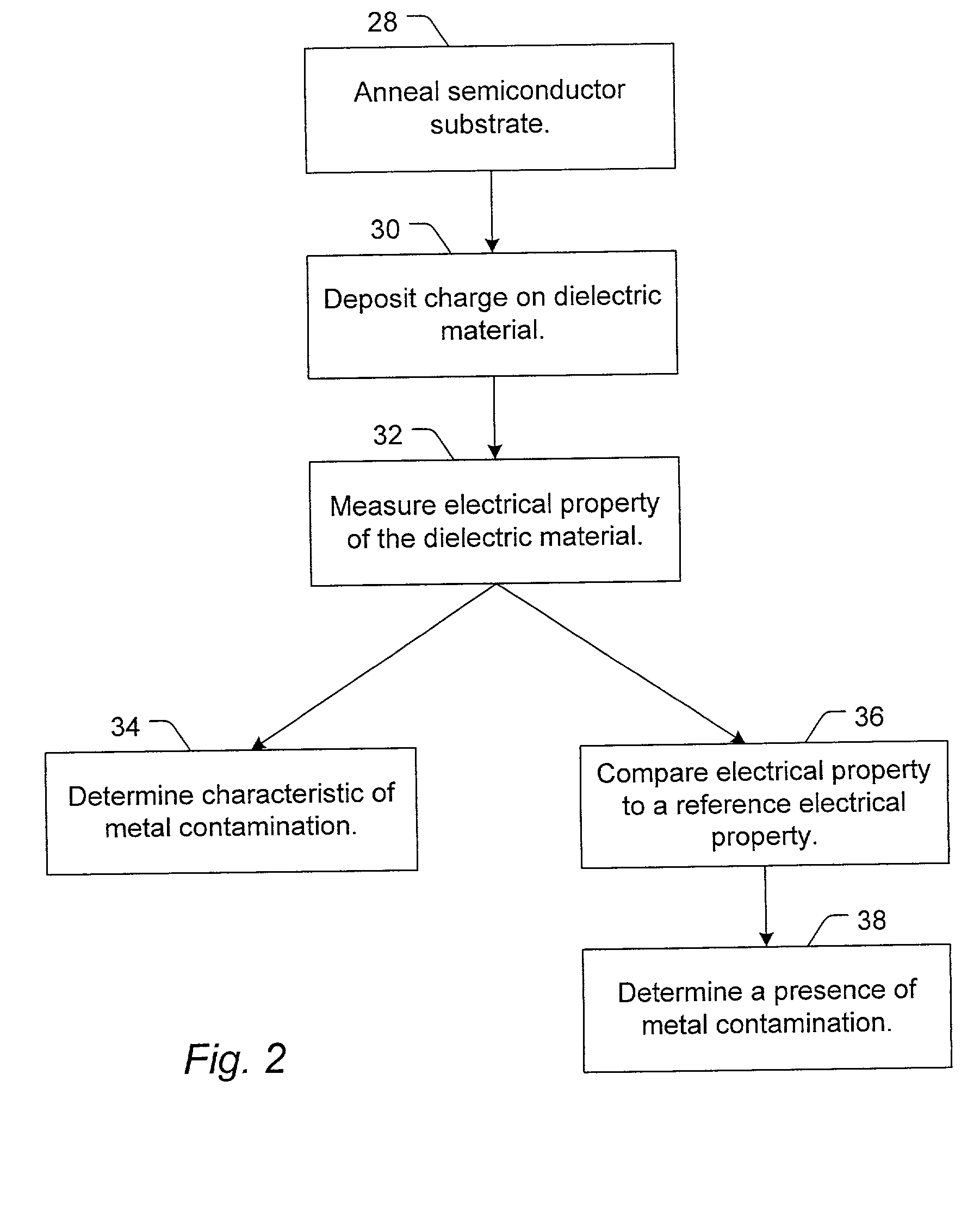Method and system for detecting metal contamination on a semiconductor wafer
a metal contamination and semiconductor wafer technology, applied in individual semiconductor device testing, semiconductor/solid-state device testing/measurement, instruments, etc., can solve the problems of metal contamination having a significant impact on the performance and reliability of semiconductor devices, degrading the electrical properties of semiconductor substrates, and affecting the performance of semiconductor devices
- Summary
- Abstract
- Description
- Claims
- Application Information
AI Technical Summary
Problems solved by technology
Method used
Image
Examples
Embodiment Construction
[0081] Effect of an Annealing Process on Detection of Metal Contamination.
[0082] A silicon dioxide dielectric material was formed on a silicon substrate. An annealing process was performed at various temperatures to drive copper metal contamination into the dielectric material. The temperatures included 20.degree. C., 300.degree. C., and 450.degree. C. A control wafer was also measured after an annealing process, which included heating the semiconductor substrate at 450.degree. C. The control wafer was a silicon dioxide dielectric material formed on a silicon semiconductor substrate which was substantially free of copper metal contamination. A charge was deposited on an upper surface of each dielectric material. The tunneling voltage of the dielectric material was measured at various positions on the semiconductor substrate. In addition, the tunneling field was determined as a function of the tunneling voltage at each measurement position. FIG. 6 illustrates a plot of the tunneling ...
PUM
 Login to View More
Login to View More Abstract
Description
Claims
Application Information
 Login to View More
Login to View More - R&D
- Intellectual Property
- Life Sciences
- Materials
- Tech Scout
- Unparalleled Data Quality
- Higher Quality Content
- 60% Fewer Hallucinations
Browse by: Latest US Patents, China's latest patents, Technical Efficacy Thesaurus, Application Domain, Technology Topic, Popular Technical Reports.
© 2025 PatSnap. All rights reserved.Legal|Privacy policy|Modern Slavery Act Transparency Statement|Sitemap|About US| Contact US: help@patsnap.com



